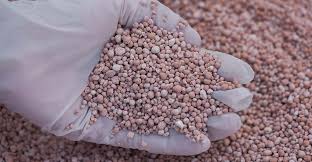
Dec . 16, 2024 09:01 Back to list
npk fertilizer from plants manufacturers
NPK Fertilizer from Plant Manufacturers A Comprehensive Overview
NPK fertilizer, a combination of nitrogen (N), phosphorus (P), and potassium (K), plays a crucial role in modern agriculture. It supports plant growth, enhances yields, and contributes to sustainable farming practices. Understanding how NPK fertilizers are produced by plant manufacturers can provide valuable insights into their formulation and application in agriculture.
The Importance of NPK Fertilizers
NPK fertilizers are essential for plant development. Each of the three macronutrients serves a unique purpose
- Nitrogen (N) Vital for leaf and stem growth, nitrogen is a key component of chlorophyll, the molecule responsible for photosynthesis
. By promoting lush, green foliage, nitrogen ensures that plants grow vigorously and effectively convert sunlight into energy.- Phosphorus (P) This nutrient supports root development and flowering. It is crucial for the formation of DNA, RNA, and ATP, which are necessary for plant energy transfer and reproductive processes. Adequate phosphorus levels in the soil lead to healthier root systems and increased fruit and seed production.
- Potassium (K) Potassium helps with overall plant health, disease resistance, and drought tolerance. It facilitates the movement of water and nutrients within the plant and aids in the synthesis of proteins and starches, making it essential for fruit and vegetable quality.
Manufacturing NPK Fertilizers
The production of NPK fertilizers involves various processes to ensure a balanced nutrient profile that meets the needs of diverse crops. Plant manufacturers often extract raw materials from natural sources, such as potash for potassium, rock phosphate for phosphorus, and atmospheric nitrogen through industrial processes.
npk fertilizer from plants manufacturers

1. Raw Material Sourcing Manufacturers source essential raw materials based on availability and cost. Potassium is often mined from potash deposits, while phosphorus is extracted from phosphate rock. Nitrogen is typically produced through the Haber-Bosch process, which converts atmospheric nitrogen into ammonia.
2. Blending and Granulation The raw materials are carefully blended to achieve the desired NPK ratio. This blending process can vary from single nutrient fertilizers to complex formulations with specific nutrient ratios tailored for particular crops. The blended materials are then granulated to facilitate easy application and utilization by plants.
3. Quality Control Rigorous quality control measures are implemented to ensure that the final product meets industry standards and provides adequate nutrient levels. Manufacturers conduct tests for nutrient concentration, solubility, and moisture content to guarantee consistent product quality.
4. Packaging and Distribution Once the NPK fertilizers are produced and tested, they are packaged for ease of handling and distribution. This step is crucial for ensuring that the fertilizers reach farmers in optimal condition, enhancing their effectiveness in the field.
Environmental Considerations
With increasing awareness about sustainable farming practices, many NPK fertilizer manufacturers are adopting eco-friendly production methods. This includes using renewable energy sources, recycling waste materials, and developing slow-release formulations to minimize nutrient runoff and leaching into water bodies. These practices help mitigate the environmental impact of fertilizers while ensuring that crops receive the necessary nutrients for growth.
Conclusion
NPK fertilizers from plant manufacturers are integral to the agricultural industry, providing essential nutrients for crop growth and development. Through a combination of advanced manufacturing techniques and a focus on sustainability, these fertilizers play a vital role in enhancing food production and ensuring food security. As the world faces the challenges of population growth and climate change, the continued innovation in NPK fertilizer production will be essential for supporting sustainable agriculture and meeting the nutritional needs of future generations. The balance between efficient fertilizer use and environmental stewardship is critical for the long-term success of agriculture worldwide.
-
10-10-10 Organic Fertilizer - Balanced NPK Formula
NewsAug.02,2025
-
Premium Organic Manure Compost for Eco Gardens
NewsAug.01,2025
-
Organic 10-10-10 Fertilizer | Balanced Plant Nutrients
NewsJul.31,2025
-
Premium Amino Acid Fertilizer | Rapid Plant Growth Booster
NewsJul.31,2025
-
10 10 10 Fertilizer Organic—Balanced NPK for All Plants
NewsJul.30,2025
-
Premium 10 10 10 Fertilizer Organic for Balanced Plant Growth
NewsJul.29,2025
